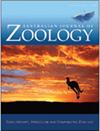大足肌虫(myotis macropus)在混凝土涵洞中的栖息选择受到微生境可用性的限制
IF 1
4区 生物学
Q3 ZOOLOGY
引用次数: 4
摘要
摘要大足蝠(myotis macropus)是一种专门的拖网蝙蝠,栖息行为灵活,能够在洞穴、树洞和人工栖息地(如桥梁、隧道和涵洞)之间切换。然而,人们对这个物种是如何在城市景观中选择涵洞筑巢的知之甚少,在城市景观中,洞可能有限或没有。我们调查了57个混凝土涵洞,发现了21个大叶蝉的栖息地,包括日栖地和母栖地;捕获了305只蝙蝠。母巢的平均蜂群大小为20.6±17.7(范围= 4-49),日巢的平均蜂群大小为2.0±0.8(范围= 1-3)。栖息涵洞与现有涵洞的显著差异主要体现在微生境(提升孔和缝隙)的可用性方面。栖息涵洞的提升孔比现有涵洞具有更大的空腔尺寸,并且仅在栖息涵洞中发现裂缝。含有微生境的涵洞在城市景观中是有限的资源,因此增加它们的可用性可能为这种特殊物种提供更多的城市栖息场所。本文章由计算机程序翻译,如有差异,请以英文原文为准。
Roost selection in concrete culverts by the large-footed myotis (Myotis macropus) is limited by the availability of microhabitat
Abstract. The large-footed myotis (Myotis macropus) is a specialist trawling bat with flexible roosting behaviour, being able to switch between caves, tree hollows and artificial roosts such as bridges, tunnels and culverts. However, little is known about how this species selects culvert roost sites in urban landscapes where hollows may be limited or absent. We surveyed 57 concrete culverts and found 21 M. macropus roosts comprising day and maternity roost sites; 305 bats were captured. Colony sizes averaged 20.6 ± 17.7 (range = 4–49) for maternity roosts and 2.0 ± 0.8 (range = 1–3) for day roosts. Roost culverts differed significantly from available culverts predominantly in terms of availability of microhabitat (lift holes and crevices). Roost culverts had lift holes that had greater cavity dimensions than available culverts and crevices were found only at roost culverts. Culverts containing microhabitat were a limited resource in this urban landscape and so increasing their availability may provide more urban roost sites for this specialist species.
求助全文
通过发布文献求助,成功后即可免费获取论文全文。
去求助
来源期刊
CiteScore
2.40
自引率
0.00%
发文量
12
审稿时长
>12 weeks
期刊介绍:
Australian Journal of Zoology is an international journal publishing contributions on evolutionary, molecular and comparative zoology. The journal focuses on Australasian fauna but also includes high-quality research from any region that has broader practical or theoretical relevance or that demonstrates a conceptual advance to any aspect of zoology. Subject areas include, but are not limited to: anatomy, physiology, molecular biology, genetics, reproductive biology, developmental biology, parasitology, morphology, behaviour, ecology, zoogeography, systematics and evolution.
Australian Journal of Zoology is a valuable resource for professional zoologists, research scientists, resource managers, environmental consultants, students and amateurs interested in any aspect of the scientific study of animals.
Australian Journal of Zoology is published with the endorsement of the Commonwealth Scientific and Industrial Research Organisation (CSIRO) and the Australian Academy of Science.

 求助内容:
求助内容: 应助结果提醒方式:
应助结果提醒方式:


